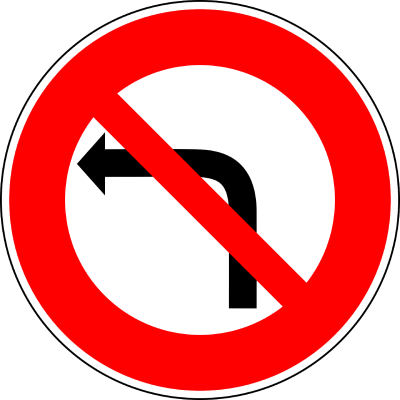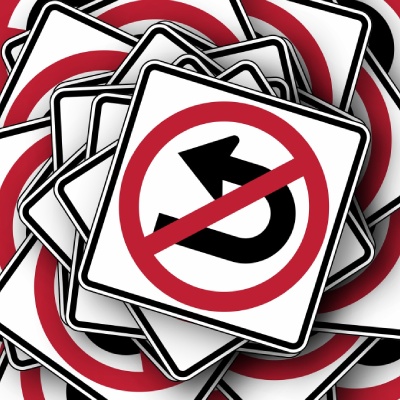In this monthly tip we would like to recommend and address the issue of bypassing and U-turn on the road.
Driving experience accumulates over time and some of us forget the basic rules and dangers involved in actions that seem daily to us.
When is Bypassing Allowed?
- Bypass: Passing over another vehicle parked or driving. Bypass is allowed only from the left and provided the road is clear.
- When there are a few lanes on a one-way road in the same direction, it is allowed to bypass from the right when the left lane is slower than on the right.
- It is allowed to bypass from the right side when you are on the lane to turn left only.
- The bypass must be completed before entering the intersection.
It is worth drawing the attention of the driver we are bypassing:
In daylight – by a light honk.
In the dark – by a slight flicker of the lights.
Emphasis For Bypassing
Before starting a bypass, it is advisable to check the need for it and the possibility of finishing the bypass safely, without interruption or risk to other passers-by.
- The most dangerous bypass is on a two-way lane – the risk of a car appearing in front.
- Do not exceed the speed limit when bypassing.
- The bypass should be started while keeping space from the vehicle we want to bypass and thus increase our field of vision and provide a signal when exiting the lane and returning.
- It is allowed to bypass 2 vehicles at once as long as there is no prohibition to overtake and it can be completed safely.
- If we started at bypass, and a vehicle appeared in front of us, slow down and return to the right lane.
- Do not cross a continuous dividing line. If the vehicle is driving on the curb, it is allowed to overtake it as long as we do not cross the dividing line.
- A bypass from the right is allowed in the following cases: when a vehicle is standing in the left lane and signaling to turn left or when the other vehicle is traveling in the lane for a left turn only.
There is a warranty on the bypass vehicle as well. To deviate as much as possible to the right side of the road and it must not increase its speed and even slow down if necessary.
When It’s Forbidden To Bypass?
Cases where no bypass should be performed:
- When visibility is impaired, or the vision is blocked.
- Approaching a pedestrian crossing.
- In the area of 100 meters before the railway junction.
- When a vehicle stopped in front of an intersection, a crossing or a railroad crossing, in order to fulfill the provisions of the law.
- At a junction with one lane in each direction of driving, except for bypassing a two-wheeled vehicle.
- Do not overtake a bypass vehicle, provided that the two-lane road has 2 lanes in each direction, it is forbidden to go to the opposite lane and bypass a vehicle.
- 50 meters before entering the tunnel and up to 50 meters after leaving it.
The law prohibits bypassing before entering the tunnel and up to 50 meters after exiting it. But this law was enacted in 1970 long before the construction of the Carmel Tunnels and the tunnels on Road 6.
Which there are one-way tunnels with a dashed line between every 2 lanes. So why do 2 lanes if you can’t use one of them? These days this law is undergoing an update and appropriate reference to such situations. For now by law, tunnels are currently prohibited.
U Turn
U-turn: As a result, the driver of the vehicle retraces his steps in the direction from which he came (turns and travels in the opposite direction).
Before making a U-turn, there is to make sure that the turn is allowed and that it does not interfere with traffic.
Cases where a U-turn should not be made:
- When there is a sign prohibiting a U-turn.
- When there is a traffic disruption or a risk to passersby.
- Approaching a steep road or a bend in the road.
- When a continuous dividing line is marked on the road.
- The U-turner does not appear to the driver of another vehicle on either side.
- There is a risk of collision with vehicles coming from any direction.
- When the road is divided by a built-up or marked separation area.
- When the u turn cannot be made once (it is forbidden to go back and forth again)
Cases where a U-turn can be made:
- A left u turn is allowed to be made from a left turn lane or any other lane that does not have a marking or sign prohibiting this turn.
- When the vision is open and there is no disturbance to traffic, or risk to passersby.
- If a sign appears prohibiting a left turn, it is permissible to make a U-turn when there is no disturbance to traffic and there is no sign or marking prohibiting this.
In Conclusion
The punishment for bypass in a non-available way is one of the strictest in the regulations. This is the only traffic offense whose penalty is 3 months disqualification of a license even when no accident has occurred. When it comes to an accident it has serious consequences.
We wish everyone health, and that we will be able to fight the Coronavirus together.
Wishing you a pleasant ride and a safe arrival!
Traffic Safety Official
LUPU – Car Fleet Management








